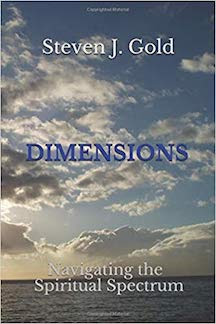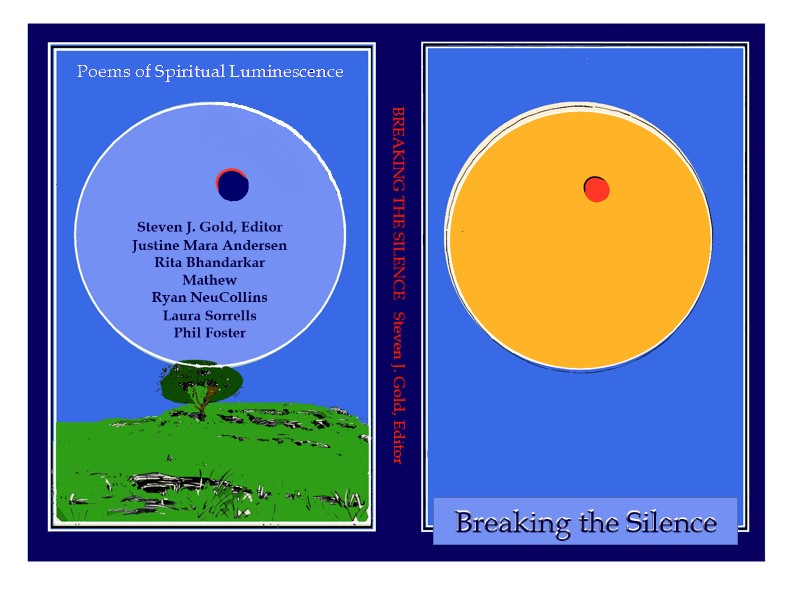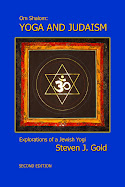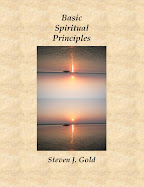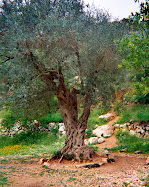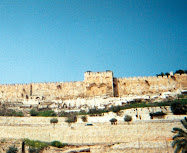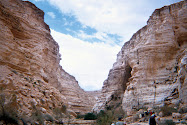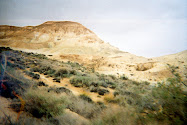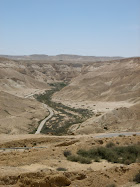Quote of the Week 419 - Listend/Hearing for Non-material Sustenance
Quote of the Week 419 - Listening/Hearing for Non-material Sustenance
Every one who is thirsty, come and drink. He who has no money, come, buy and eat. Come, buy wine and milk without money and without price. Why do you spend your money for that which is not bread and your labor for that which does not satisfy? Listen carefully to Me, and eat what is good. Let your soul delight in abundance. Incline your ear, and come to Me. Hear, that your soul will live…
--Isaiah 55:1-3, The Living Torah translation by Rabbi Aryeh Kaplan
Meditation (Click your selection, scroll down to view it)
- Audio Link: Interview - You Cannot Avoid Mystery; Eastern Meditation
- Audio Link: A Foundation for a Fruitful Meditation Practice: Science of Breath/Pranayama/Relaxation - Theory and Practice
- Audio Link: (Scroll to 11/04/18 entry) The Breath and Life Force; Guided Meditation - I Am an Empty Shell, Therefore I Am Full, etc.
- Meditation Basics - Expanded Version
- Meditation Basics - Condensed Version
- Mantra Meditation Basics
- Nada Meditation - Anahata/The Unstruck Sound
- Jewish Yoga Meditation
- Hebrew Mantras
- Hebrew Mantras, Part Two
- Hebrew Mantras, Part Three
- Hebrew Mantras - Adonai Hineni
- Healing Meditation: Ruach El Shaddai/Breath of Balance
- Meditating, Eating and Sleeping
- Shortcuts to Spiritual Development?
- Audio Link: Guided Meditation - I Am and Empty Shell, Therefore I Am Full; A Meditation on Emptiness and Dark Luminescence Based on the Opening Lines of Genesis
- Guided Meditation: The Stage
- Guided Meditation: I Am an Empty Shell, Therefore I Am Full; A Meditation on Emptiness and Dark Luminescence Based on the Opening Lines of Genesis
- Guided Meditation: The Rod, The Staff, and The Star
- Torah-Veda Meditation Class Site
- Interspiritual Contemplative Group
CURRENT TEACHING SESSIONS
Thursday, January 29, 2009
Quote of the Week 78 - Ethics of the Fathers
Chapter 1, Mishnah 17, from Ethics of the Fathers, Pirkot (Tractate) Avoth, (Being the Ninth Tractate of the Fourth Order Nezikin) by Philip Blackman, revised by Rabbi Isaac Waller
Sunday, January 25, 2009
Further Correlations: Yoga and Judaism Levels, Layers, Concepts
Yoga Kosha (Sheath, Veil, Layer): Annamayakosha – Food/Material/Physical
Yoga Practice: Karma, Asana
Jewish Layer of the Soul: Nefesh
Kabbalistic World: Assiyah
Jewish Practice: Mitzvot
2. Ashtanga Yoga Limb: 4, Prana
Yoga Kosha: Pranamayakosha
Yoga Practice: Pranayama
Jewish Layer of the Soul: Ruach
Kabbalistic World: Yetzirah
Jewish Practice: Breath Awareness
3. Ashtanga Yoga Limb: 5, Pratyahara
Yoga Kosha: Manomayakosha
Yoga Practice: Pratyahara, Sense Withdrawal
Jewish Layer of the Soul: Ruach ha-kodesh
Kabbalistic World: Briyah
Jewish Practice: Hitbodedut
4. Ashtanga Yoga Limb: 6, Dharana
Yoga Kosha: Vijnanamayakosha
Yoga Practice: Dharana, Concentration
Jewish Layer of the Soul: Neshamah
Kabbalistic World: Atziluth below the triad of Keter, Chokmah, Binah
Jewish Practice: Kavannah
5. Ashtanga Yoga Limb: 7, Dhyana
Yoga Kosha: Anandamayakosha
Yoga Practice: Dhyana, Meditation
Jewish Layer of the Soul: Chaya
Kabbalistic World: Triad of Keter, Chokmah and Binah of Atziluth
Jewish Practice: Hitbonenut
6. Ashtanga Yoga Limb: 8, Samadhi
Yoga Kosha: The Pure Inner Spirit beyond the koshas; the realm of Sat Chit Ananda; in a lower level of samadhi, some sense of a separate self remains, but in a higher level, there is complete absorption/union of the separate self with the One
Yoga Practice: The culmination of the preceding practices
Jewish Layer of the Soul: Beyond layers, Devekut (clinging, cleaving) is the level where some sense of separate self remains, Avodah Be-Bittul, Yechida, Yichud is the level where there is complete absorption/union of the separate self with the One
Kabbalistic World: The realm of Ein, Ein Soph, Ein Soph Aur beyond the 4 worlds
Jewish Practice: The culmination of the preceding practices
Wednesday, January 21, 2009
Quote of the Week 77 - Gopi Krishna
The story of Gopi Krishna’s lengthy ordeal can be taken as a cautionary tale to be careful about what you wish for. It had a happy ending for him, but not without much turmoil and instability preceding it. Part of his problem may have been due to the fact that he never appeared to have been involved with a protective lineage that generally assures that one is never given more than they can handle, although one is still challenged, sometimes fairly uncomfortably, to expand one’s “comfortable capacity”. Rather, it appears that he was able to experience his awakening through sheer determination and sustained effort, but he suffered certain consequences from his crashing the Divine Wedding Party before he was really ready. If you Google his name, you will find a wealth of references and some extraordinary materials in which he describes his experiences.
“At the age of seventeen he began to practice concentration exercises because he felt his own mind was shamefully undisciplined. His interest soon led him towards meditation, and within a few years he was sitting three hours daily, concentrating on the top of his head, where he visualized a luminous lotus. When he was thirty-five, after eighteen years of practice, he felt the stirring of intensely pleasurable energy at the base of his spine, which soon moved up into his brain, filling it with an infinite, blissful light. Instead of forever vanishing his suffering, the experience depressed him tremendously. Nevertheless, after about a decade of physical illness and mental instability due to the intensity of the force released in his system, his condition stabilized. Now he enjoys a blissful state and considers himself an authority on spiritual matters, based upon his own realization.”
Monday, January 19, 2009
Inauguration Thoughts
First, an excerpt from the epilogue of my book:
“The most virulent form that the Dharma has taken in the West is the pseudo-religion of liberty-equality-democracy worshiped in the shrines and institutions of the West. Although the New World, led by the United States, has emerged as the premier leader, exemplar and disseminator of this creed, the question remains whether a mature equilibrium, fed by ethical, moral and humanitarian guidelines and considerations, can be established. Or will it continue along certain current lines of juvenile excess and abuse, driven by greed and selfishness, that distort and make a mockery of the values and principles of its founders?”
When I first embarked upon my adult study of Judaism in light of Yoga, in addition to these subjects, there was a third prong of study in my long-range plan that I have not quite gotten to, and that was to study the founding of the USA and the philosophies of the various people involved. I was interested in discovering any connections between that movement and Yoga and Judaism and underlying spiritual aspects in general. What first spurred me in that direction was a trip I took with my family several years ago to Washington, DC. It was the first and only trip I have taken there as an adult. What struck me in my visits to the various monuments, especially the Washington Monument and the Lincoln Memorial, was the extent to which the founding principles of our country, as embodied in these monuments, incorporated a kind of national pseudo-religion to which all of its citizens subscribe, and which binds all of us as one. These were shrines, temples, as much as they were monuments. I was particularly awestruck standing in the Lincoln Memorial and reading the incredibly powerful and poetic words of this great man engraved on the walls. It was apparent to me that among many of his other traits, here was a spiritual giant who had come to earth for a specific mission from a realm far more superior and sublime.
And now, once again, we will be celebrating a refreshing and much-needed renewal of the spirit of the founders. I hope that all of us will join in wishing Mr. Obama all the best in his efforts to renew and uplift.
P.S. We watched the two-hour celebration of the inaugural at the Lincoln Memorial on Sunday. For anyone who hasn’t seen it, I highly recommend tracking it down and watching it. It was a fantastically orchestrated event and very inspiring. One thing that struck me as very cosmically humorous, in beholding the many shots of the Washington Monument from the perspective of the Lincoln Memorial, and vice-versa, with the reflecting pond in-between the two, I had a sudden flash of spiritual insight. Obelisks, of course, are obviously phallic, and here we behold this fantastic phallic symbol as the monument to the father of our country. Yogis and Hindus must be veritably impressed by this humongos shiva lingam! But then, in contrast to and across from this extremely male, vertical structure stands the horizontally-oriented Lincoln Memorial, much wider than it is tall, with its large and welcoming entrance, leading to the dark, womb-like inner sanctum. And thus we have the corresponding female monument, the national yoni, with the reflecting pool serving as the birth canal connecting the two. Think about it. How cosmic!
Thursday, January 15, 2009
Quote of the Week 76 - Modern Day Samurai
“In 2003, as Hurricane Isabelle was approaching Washington, DC, our US Senators and Representatives took two days off in anticipation of the storm. On the ABC evening news, it was reported that because of the dangers from the hurricane, the military members assigned the duty of guarding the Tomb of the Unknown Soldier were given permission to suspend the assignment. They respectfully declined the offer: “No way, Sir!” Soaked to the skin, marching in the pelting rain of a tropical storm, they said that guarding the Tomb was not just an assignment, it was the highest honor that can be afforded to a serviceperson.
“Interesting facts about the dedicated guards of the Tomb of the Unknown Soldier: Guards are changed every thirty minutes, 24/7, 365 days a year. The tomb has been patrolled continuously in this fashion since 1930. Guards must commit 2 years to guard the tomb, live in a barracks under the tomb, cannot disgrace the uniform or the tomb in any way, and cannot drink any alcohol on or off duty or swear in public for the rest of their lives. After their two-year duty, the guards are given a wreath pin that is worn on their lapel signifying their service. Guards must obey these rules for the rest of their lives or give up the wreath pin. There are only 400 presently worn.
“The shoes are specially made with very thick soles to keep the heat and cold from their feet. There are metal heel plates that extend to the top of the shoe in order to make the loud click as they come to a halt. There can be no wrinkles, folds or lint on the uniforms. Guards dress for duty in front of a full-length mirror. Every guard spends five hours a day getting his uniforms ready for guard duty.
“The first six months of duty a guard cannot talk to anyone, nor watch TV. All off-duty time is spent studying the 175 notable people laid to rest in Arlington National Cemetery. A guard must memorize who they are and where they are interred.”
Wednesday, January 7, 2009
Quote of the Week 75 - Vincent van Gogh
Vincent van Gogh

